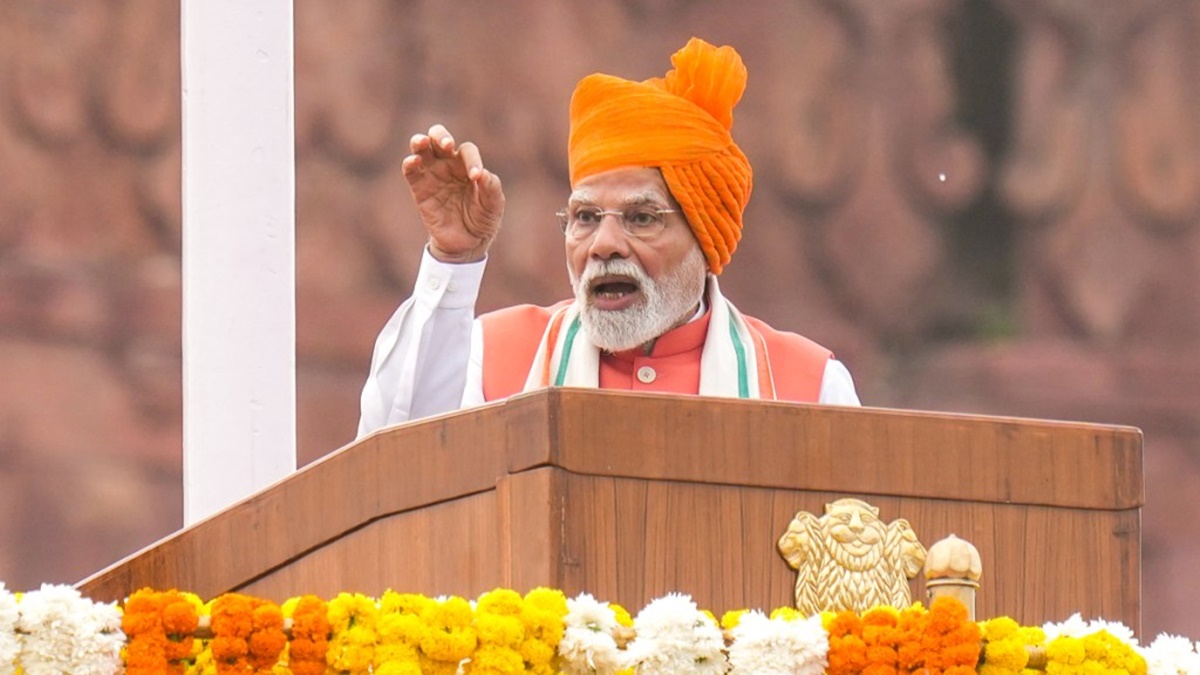By Ashok Gulati & Ritika Juneja
As India hoisted the tricolour on its 79th Independence Day, it stood proudly as a confident, resilient, and rising nation. It is not just the world’s largest democracy, but a country that has crafted its destiny quite successfully since it attained independence in 1947. Not withstanding the current headwinds of Donald Trump’s tariff war, it has weathered many storms in the past. One may recall the sanctions by US in 1998 after the Pokharan nuclear test during the Atal Bihari Vajpayee government, or the US’ role in sending its seventh fleet in 1971, when India’s war with Pakistan led to the creation of Bangladesh. Every time, India emerged stronger. Today, no one can stop India’s rise.
Economic Growth and Global Footprint
Through the past decade, India’s GDP has more than doubled. It is projected to touch $4.19 trillion in 2025, making it the fourth-largest economy, only behind the US ($30.5 trillion), China ($19.2 trillion), and Germany ($4.74 trillion) (according to International Monetary Fund’s estimates). Measured in purchasing power parity (PPP) terms, India is already the world’s third-largest economy at $17.65 trillion, trailing only China ($40.72 trillion) and the US ($30.51 trillion) in 2025. All this is a reflection of rising aspirations and a strong resolve to regain India’s civilisational legacy.
Since Independence, poverty levels have plummeted, while literacy, life expectancy, and women’s empowerment have seen transformative leaps. From Chandrayaan’s historic landing to the trailblazing Mars mission Mangalyaan, India has staked its place at the frontiers of space exploration. The meteoric rise of the Unified Payments Interface (UPI), processing over 10 billion transactions each month and inspiring fintech innovations worldwide, reflects a digital revolution. Indian-origin leaders such as Sundar Pichai, Satya Nadella, Indra Nooyi, and many more lead some of the most influential corporations, underscoring India’s intellectual and entrepreneurial footprint far beyond its borders. Lal Bahadur Shastri’s call of “Jai Jawan, Jai Kisan,” later enriched by Vajpayee with “Jai Vigyan” (hail science) and more recently by Modi with “Jai Anusandhan” (hail innovation), reminds us that India’s progress is rooted in science and technology. As Vajpayee once said, what information technology (IT) is for India, biotechnology (BT) is for Bharat.
The Independence Day is both a moment for celebration and reflection on the road travelled—and the one still ahead.
Agriculture, Subsidies and Sustainability
Looking back to 1947, India’s GDP was around $30 billion. The population stood at 330 million, with an estimated 80% living in poverty. Average life expectancy was a mere 32 years and literacy levels were just 18.3% (1951). Foodgrain production stood at about 50 million metric tonnes (MMT). Fast forward to 2025: India’s population has risen to 1.46 billion, but poverty, measured at the $3/day (2021 PPP) threshold, has fallen to just 5.3%, according to World Bank estimates. Literacy has surged to 77%, while life expectancy has more than doubled to 72 years (2023). Foodgrain production has multiplied sevenfold, reaching 353.9 MMT in 2024-25. India is now the world’s largest rice exporter, shipping 20.2 MMT in FY25. The government’s grain stocks exceed 90 MMT, well above buffer norms. Horticulture output has risen 15 times since independence, milk production 11 times, and egg production an astonishing 77 times. From FY15 to FY25, under the Modi government, India’s real GDP has grown at an average of 6.5% annually, while agricultural GDP has expanded by 4% per year, well above the population growth rate of under 1%. As a result, India is a net exporter of agriculture, unlike the US and China, who are both net importers of agriculture. These are not mere statistics, they narrate the story of a country in motion.
However, even as India has achieved food security, many challenges remain—nutritional security, especially for children under the age of five, remains pressing. This calls for a sharper focus on women’s education, improved maternal health, and continued emphasis on sanitation. The Modi government deserves compliments in making India open defecation-free (ODF), which will help improve child nutrition.
But in the agri-food space, much more can be done. In particular, rationalising food and fertiliser subsidies must be put on high priority. Together, these account for nearly Rs 3.71 lakh crore in the 2025-26 Union Budget, Rs 2.03 lakh crore for food and Rs 1.67 lakh crore for fertilisers. While these subsidies are meant to shield vulnerable populations, they are plagued by large inefficiencies. Studies suggest that at least 20-25% of these subsidies fail to reach intended beneficiaries. These subsidies, though politically tempting, come at the cost of productive investments. The next leap forward has to be rationalising subsidies and increasing investments in agri-R&D and efficient value chains. India’s future lies in empowering its citizens to innovate, invest, and generate sustainable incomes. Environmental sustainability has to be central to this journey. The quality of India’s soil, water, and air needs to be protected for realising the Viksit Bharat vision by 2047.
As we reflect with pride on our progress, it is equally important to look outwards. While India has surpassed Pakistan and Bangladesh in per capita income—both in nominal and PPP terms—it remains far behind China, which began its journey around the same time. China’s per capita income in 2025 is $13,690 (PPP $28,980) while India is at $2,880 (PPP $12,130). However, for India, democracy remains its compass, setting it apart from its neighbours.
India’s story is still a work in progress. The world watches it closely. It has lessons for many countries in Asia and Africa, and in many high-tech sectors, it competes with the best. The Modi government’s vision for a Viksit Bharat by 2047 can be realised only if we remain focused on accelerating growth inclusively, cut down on bureaucratic hurdles, and adopt scientific culture as the guiding principle, backed by investments.
The writers are respectively, distinguished professor and research fellow, ICRIER.
Disclaimer: Views expressed are personal and do not reflect the official position or policy of FinancialExpress.com. Reproducing this content without permission is prohibited.

